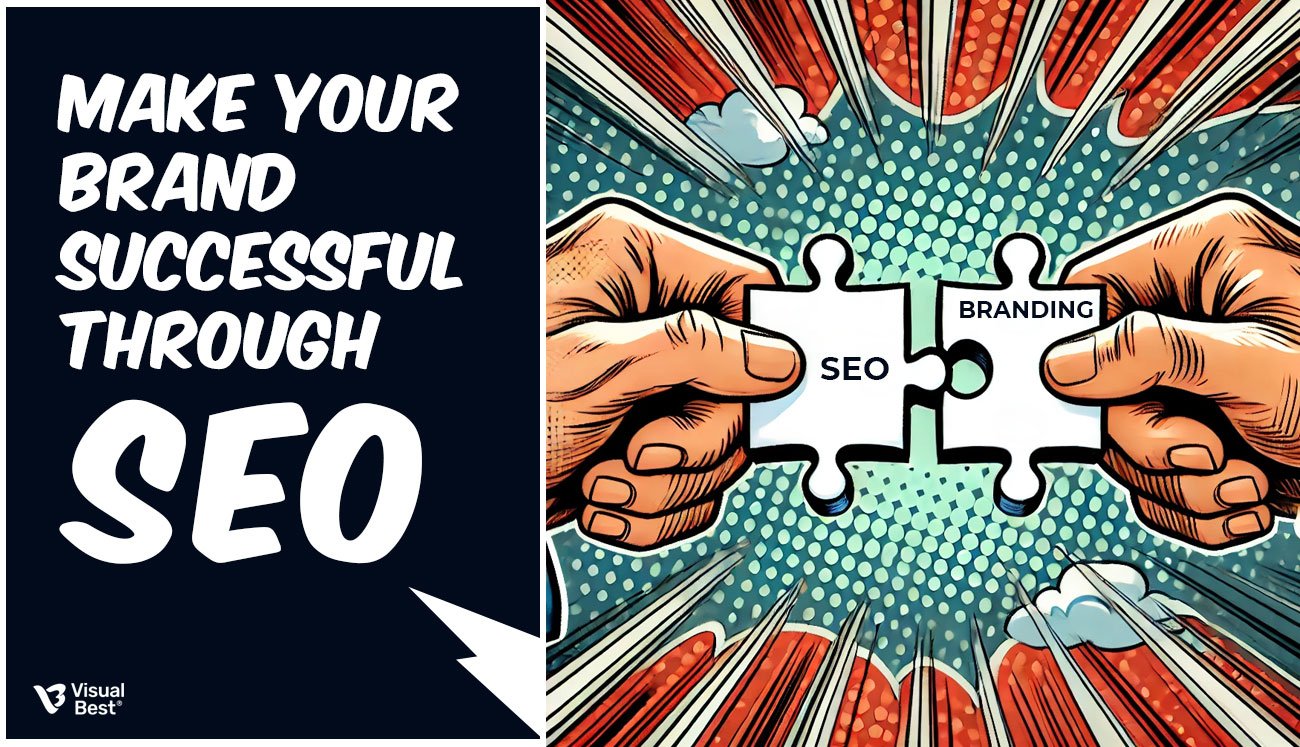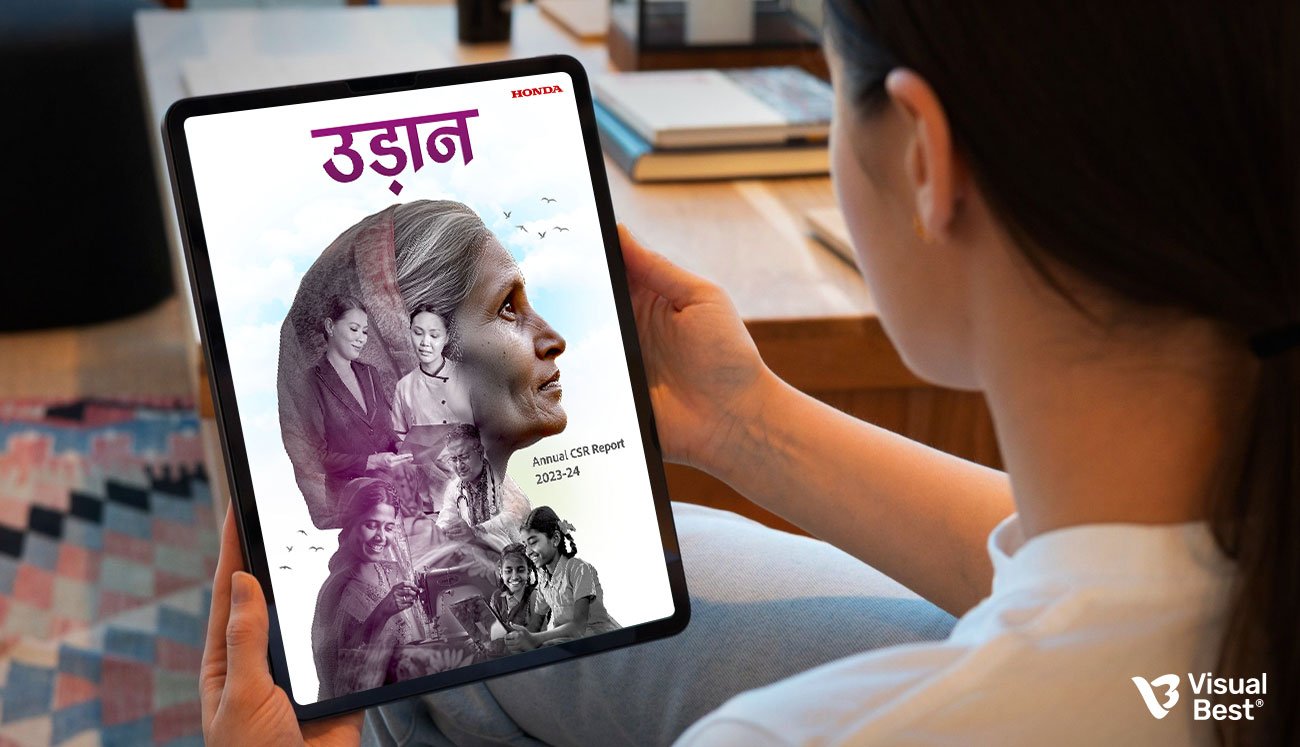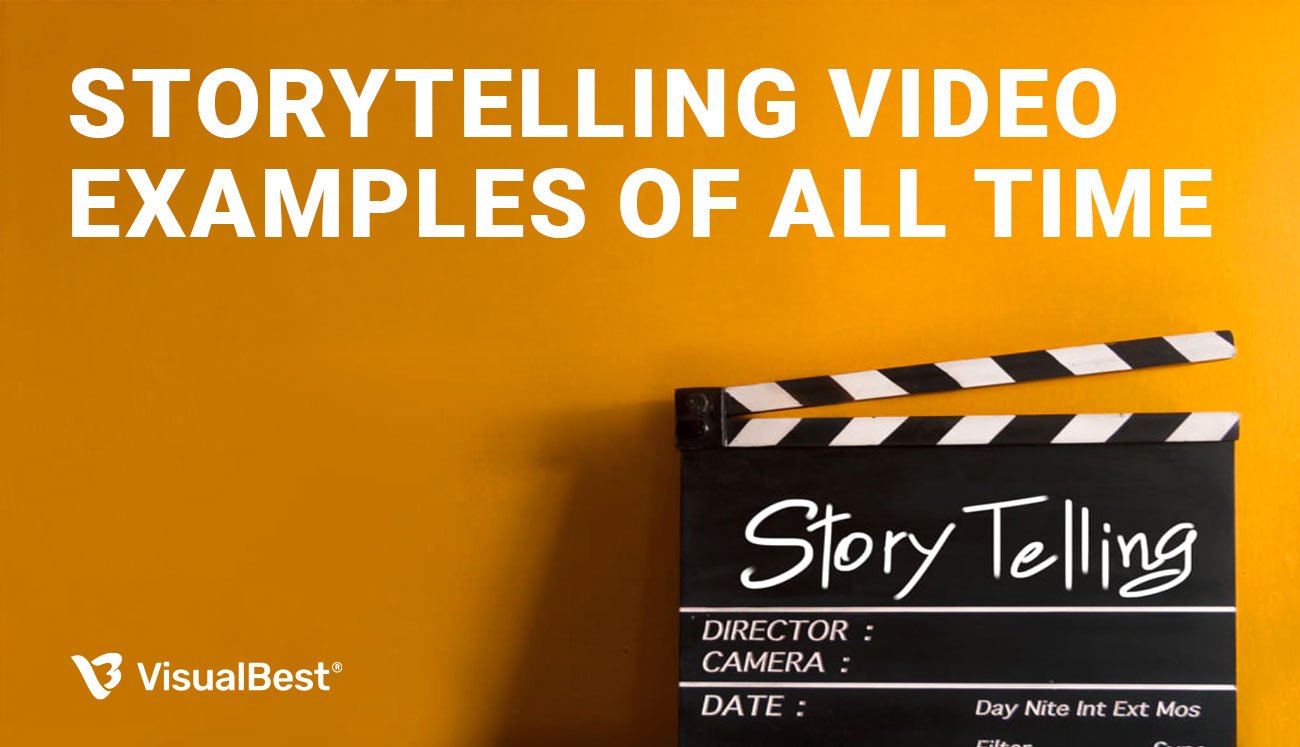How to Make Your Brand Successful Through SEO in 2025

Imagine someone searching for the best legal firm. They type the query into Google, and your agency appears at the top of the results. The audience considers it the best choice, because it is ranked on top. This is the power of SEO. The right optimization strategy ensures that your business is the first thing potential clients see, influencing their decisions instantly.
his is called inbound marketing, where we use SEO to boost your brand’s online visibility. Strong SEO attracts visitors and turns them into customers, helping you generate more revenue.
In the long run, SEO is a cost-effective strategy—it brings in genuine leads without the high costs of paid ads like Google Search or Display Ads. Paid ads can be expensive, but SEO delivers long-term benefits at a lower cost. Through SEO for brand awareness, your business establishes trust with potential customers who discover your brand naturally through high search engine rankings.
The year 2025 requires businesses to implement powerful SEO branding approaches because AI algorithms and voice search technology have become fundamental components of search results. Numerous businesses experience steady growth through core marketing integration of SEO because this practice enables SEO for brand success.
This analytical post explores how companies should use SEO in 2025 to achieve visibility growth and customer trust development that leads to business success.
Why SEO is Essential for Branding
1. Increases Organic Visibility
An effective SEO approach puts your brand where it belongs on search engine results pages (SERPs) so your target audience can locate you while looking for relevant search terms. Your business achieves better awareness when it becomes visible to potential customers thus helping them identify your company with their requirements.
The research conducted by BrightEdge shows that search engines initiate more than 68% of all online activities thus making SEO essential for brand visibility enhancement. Brand visibility and memorability improve because your brand appears frequently in search results for items people search repeatedly.

To maximize organic visibility, brands should focus on optimizing metadata, using relevant keywords, and maintaining a mobile-friendly website. Incorporating structured data and schema markup helps search engines understand your content better, enhancing its chances of appearing in rich results. Additionally, optimizing images, improving page speed, and reducing bounce rates contribute significantly to higher visibility. These efforts ensure your brand remains prominent in search results, boosting overall discoverability.
2. Builds Trust and Credibility
Users develop trust toward brands that appear at the top positions on Google or Bing searches. Brands that appear on search result page one generally seem more reliable to consumers. SEO delivers both website visitors and establishes your brand reputation because users recognize your brand as their reliable answer.
User experience and content reliability matter to search engines since Google has established E-E-A-T (Experience, Expertise, Authoritativeness, Trustworthiness) guidelines that favor authoritative and trustworthy materials. A brand attains better rankings through the production of trustworthy authoritative content which leads to increased consumer trust.
Building trust and credibility requires a multifaceted approach, including securing backlinks from reputable sources, maintaining positive online reviews, and demonstrating thought leadership through valuable content. Regularly updating content to reflect industry changes enhances relevance and accuracy, further strengthening trust. Additionally, optimizing for local SEO ensures that your brand builds credibility within specific geographic markets, reinforcing its reliability in both global and local search environments.
3. Establishes Brand Authority
Through SEO your brand gains credibility by developing premium content which resolves your audience’s most significant challenges. A brand that maintains its position in relevant keyword searches becomes established as an industry leader over a sustained time.
Through its SEO strategy, HubSpot dominates multiple inbound marketing search results which helps establish its leadership in the market. Companies can establish authority while earning domain recognition through detailed guides along with case studies and white papers.
Maintaining brand authority through SEO requires consistent production of well-researched content that aligns with audience needs and industry trends. By continuously updating and expanding content, businesses remain relevant and authoritative in the eyes of search engines and users. Incorporating expert opinions, statistics, and actionable insights further reinforces credibility. As a result, search engines reward such content with higher rankings, ensuring sustained brand recognition and dominance within the industry.
4. Drives Consistent Traffic and Leads
SEO provides ongoing organic traffic flow because paid advertising becomes inactive after the spending goal is reached. This consistent open duty generates both increased brand memorability and extended duration of customer relationships.
The research from Ahrefs demonstrates that Google fails to serve traffic to more than nine out of every ten web pages so content optimization for SEO becomes vital to maintain perpetual visibility. Through SEO organizations attract high-quality leads which transform into devoted customers because of their superior qualifications.
To drive consistent traffic, brands must focus on long-tail keywords and evergreen content that remain relevant over time. Regularly refreshing older content to align with evolving search algorithms and user intent ensures continued relevance and traffic. Additionally, implementing internal linking strategies and maintaining a well-structured website enhances user experience, encouraging longer site visits and reducing bounce rates. These practices cumulatively foster sustainable growth in traffic and lead generation.
Relationship Between SEO and Brand Awareness/Success
SEO as a Catalyst for Brand Recognition
Users who come across a brand several times within their search for relevant content strengthen their recognition of that brand. Users exposed to a brand through search results multiple times will increase their retention of that brand which leads to improved conversion rates.
SEO for brand awareness plays a pivotal role in ensuring that users are exposed to your brand at different stages of the customer journey. For example, a user researching “best CRM software” may encounter a brand through multiple blog posts, comparison guides, and testimonials. This repeated exposure builds familiarity and trust.
Enhancing Brand Perception Through Search Results
SEO for brand awareness enables companies to handle their reputation through dominant control of search result content. The placement of a brand at the top position for positive content together with reviews and authoritative articles helps form positive brand perception among audiences.
Amazon takes control of e-commerce-related searches which strengthens its position as a leading trusted online retailer. To achieve this brands should optimize their content for positive reviews alongside media coverage and thought leadership pieces to rank above negative content.
SEO and Brand Loyalty
Through SEO your brand maintains maximum visibility throughout the customer experience cycle starting from the awareness stage and moving to the consideration period ending with the conversion and loyalty stages. When you create content that addresses different stages of the sales funnel your brand stays in view while establishing enduring customer relationships.
Offering continuous valuable content seamlessly delivered to users helps brands develop loyal relationships based on trust. The SEO strategies of Salesforce enable the conversion of informative content seekers into loyal customers by using email campaigns with targeted messaging after initial website visits.
SEO Strategies for Brand Awareness
1. On-Page SEO
The optimization strategy of web pages through on-page SEO allows websites to reach their targeted audience by securing better search engine rankings. The key elements include:
- Keyword Optimization: Your SEO strategy should focus on selecting profitable keywords that have lower competition levels matching your corporate product range. Your visibility will increase by using appropriate keywords that combine SEO branding strategy with SEO for brand awareness.
- Meta Tags and Descriptions: The organization should create powerful title tags and meta descriptions that present its brand proposition to users alongside click-inducing language.
- Internal Linking: The site structure becomes stronger when users connect to valuable pages that enhance their experience.
- Content Optimization: Organize your content with high-quality materials that contain targeted keywords to engage your audience while solving their problems.
Pro Tip: Search engines comprehend your content better when you implement LSI keywords which enhance its relevance.
2. Off-Page SEO
Off-page SEO focuses on building a brand’s authority through external factors. Key tactics include:
- Link Building: Acquire backlinks from authoritative websites to enhance domain authority and improve search rankings.
- Social Media Signals: Promote content across social platforms to boost engagement and drive referral traffic.
- Guest Blogging: Contribute valuable content to industry-relevant websites to position your brand as a thought leader and gain high-quality backlinks.
Case Study: Buffer leveraged guest blogging and influencer outreach to build a strong backlink profile, resulting in increased organic visibility and brand authority.
3. Technical SEO
Technical SEO ensures that a website meets the technical requirements of search engines to improve organic rankings. Key components include:
- Site Speed Optimization: Ensure fast page load times to reduce bounce rates and improve user experience.
- Mobile-Friendliness: Optimize the website for mobile devices as Google prioritizes mobile-first indexing.
- Structured Data Markup: Use schema markup to provide search engines with additional information about your content and improve visibility.
- XML Sitemap and Robots.txt: Ensure proper indexing and crawling of your website by search engines.
Expert Tip: Regularly conduct SEO audits to identify and fix technical issues that may impact search engine rankings.
Importance of Content and User Experience (UX) in SEO Branding
Content: The Heart of SEO Branding
High-quality content is the foundation of a successful SEO branding strategy. We emphasize content optimized for search intent to attract traffic and engage and convert visitors. In 2025, brands must focus on creating E-E-A-T (Experience, Expertise, Authoritativeness, Trustworthiness) content to meet Google’s evolving algorithms.
Key Content Strategies for SEO Success:
- Informational Blog Posts: Answer user queries and establish your brand as an industry expert.
- Product/Service Pages: Optimize these pages with relevant keywords while highlighting unique selling points.
- Video Content: Enhance engagement by incorporating video content that appeals to visual learners.
- User-Generated Content (UGC): Encourage customer reviews and testimonials to boost credibility and trust.
Case Study: Zapier uses a content-driven SEO strategy to rank for thousands of long-tail keywords, driving significant organic traffic and establishing itself as a trusted automation platform.
User Experience (UX): Driving SEO and Brand Loyalty
Google’s Core Web Vitals and UX signals have made user experience a critical ranking factor. A seamless and intuitive website design not only improves rankings but also keeps users engaged, increasing the likelihood of conversions.
Key UX Optimization Strategies:
- Mobile Optimization: Ensure responsive design for an optimal experience on all devices.
- Intuitive Navigation: Make it easy for users to find relevant content quickly.
- Fast Loading Times: Reduce page load time to prevent user drop-offs.
- Accessible Design: Ensure that your website is accessible to all users, including those with disabilities.
Example: Airbnb leverages a user-centric design and intuitive navigation, resulting in higher engagement rates and improved search rankings.
Page Speed: A Critical SEO Factor in 2025
Why Page Speed Matters
User experience together with SEO strongly depends on page loading speeds. The growing usage of mobile devices and instant desire among users during 2025 means most websites should finish loading within three seconds or less. Simply delaying one second of web page load time results in a 7% reduction of conversions alongside increased bounce rates of slow websites thus causing missed opportunities. Search engines including Google provide top search positions to websites that load data quickly. The speed of websites generates two benefits providing enhanced user satisfaction and increased search engine bot effectiveness in page indexing.
Search rankings now heavily rely on Google Core Web Vitals which evaluate the performance indicators of Largest Contentful Paint (LCP), First Input Delay (FID), and Cumulative Layout Shift (CLS). Websites miss their organic search placements when their performance standards are not met regardless of the optimization quality of their content.
Key Factors Affecting Page Speed
- Image Optimization: Large, uncompressed images often slow down web pages. Websites can significantly reduce image size without compromising quality by using next-gen image formats like WebP and AVIF.
- Browser Caching: Implementing browser caching allows frequently accessed static resources (such as CSS, JavaScript, and images) to be stored on the user’s device. This dramatically reduces load times during repeat visits.
- Code Minification: Removing unnecessary characters, comments, and spaces from CSS, JavaScript, and HTML files helps reduce page load time. Minification improves the rendering speed by decreasing the size of code files.
- Content Delivery Network (CDN): CDNs distribute website content across multiple servers globally. When a user accesses a website, the content is delivered from the nearest server, ensuring faster page load times regardless of geographical location.
- Reducing HTTP Requests: Minimizing the number of elements loaded on a page, including stylesheets, scripts, and images, can drastically improve load time. Reducing HTTP requests optimizes resource loading and enhances page speed.
Advanced Strategies to Optimize Page Speed
- Lazy Loading of Images and Videos: Implement lazy loading to delay loading non-essential content until the user scrolls to it. This reduces initial page load time and improves the user experience.
- Preloading Critical Resources: Use preload and prefetch to load critical resources ahead of time, ensuring that essential content is ready to display when required.
- Server Optimization: Investing in a high-performance server infrastructure enhances response times. Using technologies like HTTP/2 and QUIC can further boost loading speed and improve website performance.
- Asynchronous Loading of JavaScript and CSS: By deferring non-critical JavaScript and CSS, websites can reduce the render-blocking effect, which improves page speed and enhances overall UX.
- Regular Speed Audits and Testing: Conducting routine audits using tools like Google PageSpeed Insights, GTmetrix, and Lighthouse helps identify bottlenecks and allows businesses to address them proactively.
Social Media and SEO: A Powerful Synergy
How Social Media Influences SEO
Social media indicator metrics that include likes, shares and comments are not direct factors for SEO rankings but they proactively help SEO through audience traffic volume and platform visibility improvements as well as improving content reach. The virality of content on Instagram, Twitter and LinkedIn usually leads to link acquisitions from prestigious websites that strengthen your search engine rankings.
Modules that get popular on social media networks will draw authoritative backlinks from quality websites thus boosting domain authority and improving organic search positions. Social profiles show up in search engine results which provides your brand several points of interaction for users to connect with your brand.
Indirect SEO Benefits of Social Media
- Increased Website Traffic: Social media post distribution of content drives users to visit your website because it produces more traffic from links shared across multiple platforms. Higher page visibility on search engine results crowns your content as valuable thus raising your website position.
- Boosts Content Lifespan: Social media sharing extends the lifespan of content while simultaneously attracting more visitors to it across both present and extended periods. Your content will maintain its SEO advantages when it receives continued exposure over time.
- Higher Indexing Rate: Social media links that frequently appear with newly shared content enable search engines to index it quickly so they can rank it higher for chosen keyword terms.
- Improved Brand Recognition: Brand recognition gets stronger when a company maintains an active social media presence which creates many points for engagement with users. Marketable brands achieve better search rankings through elevated click-through rates on search engine result pages.
Strategies to Leverage Social Media for SEO in 2025
- Promote Evergreen Content Across Platforms: You should distribute your evergreen content through various platforms multiple times because this practice ensures continuous visitor activity and engagement.
- Encourage User Engagement and Sharing: You should deploy robust call-to-action instruments to stimulate users toward commenting while initiating more social shares along with increasing content likes. Enhanced engagement levels from content promote relevance to search engines because they interpret higher popularity.
- Leverage Influencer Partnerships: Your brand should establish connections with influencers who adhere to your company values. Content created by influencers produces superior backlinks combined with heavier visitor traffic to your website.
- Utilize Social Listening to Identify Trends: Monitoring industry conversations allows brands to create timely, relevant content that resonates with their audience, increasing the likelihood of organic shares and backlinks.
- Repurpose High-Performing Content: Convert well-performing blog posts into videos, infographics, and carousels for social platforms. Repurposing content increases visibility and boosts SEO by driving consistent traffic.
Best Practices for Social Media and SEO Integration
- Optimize Social Profiles for Search: Use relevant keywords in your social media bios and descriptions to improve search visibility.
- Link Back to Your Website in Social Posts: Always include backlinks to your website in social content to drive traffic and encourage engagement.
- Leverage Hashtags for Better Discoverability: Use relevant and trending hashtags to increase content visibility and boost traffic.
- Monitor Analytics to Track Performance: Use tools like Google Analytics, Hootsuite, and SEMrush to monitor how social media traffic impacts your website’s SEO performance.
Pro Tip: Social media and SEO efforts should complement each other. Consistent brand messaging and optimized content across all platforms create a cohesive digital presence that drives both search rankings and audience engagement.
How to Measure SEO Success for Branding
1. Organic Traffic Growth
Use organic traffic monitoring to determine how successfully your SEO branding strategy performs with time. The behavioral patterns of website visitors together with traffic information can be accessed via Google Analytics.
2. Keyword Rankings
Review keyword rankings to check the performance of your website toward specific search terms. Better rankings in search results show that your Search Engine Optimization methods for brand achievement have started to produce benefits.
3. Brand Mentions and Backlinks
Digital platform mentions of your brand should be tracked and the analysis of link quality with link quantity determines off-page SEO success results. Ahrefs and SEMrush tools help users successfully identify brand mentions and backlinks.
4. Conversion Rate Optimization (CRO)
SEO strategies’ performance by studying conversion rate statistics. Measuring business success involves tracking how many times users achieve goals and how many leads they generate as well as direct sales numbers.
5. Bounce Rate and Dwell Time
Track the number of visitors who leave your website during its first minute along with how long users stay on each page to determine user behavior. Your website content delivers value when users spend a longer time reading content and bounce away from the pages less often.
How Visual Best Can Help in SEO Branding Strategy
The Visual Best team specializes in developing strategic SEO strategies based on data that improve brand visibility and measurable business outcomes. The combination of modern SEO methods with original content designs at Visual Best results in increased brand Identity.
Why Choose Visual Best for Your SEO Branding Strategy?
- Customized SEO Solutions: The company provides tailored SEO approaches that match both your brand purposes and sector market direction.
- Expert Content Creation: Expert Content Creation delivers engagement power for users alongside SEO optimization traits that convert visitors.
- Comprehensive Technical SEO Audits: The implementation of complete Technical SEO Audits verifies the performance of websites regarding search engine optimization standards and user pleasure.
- Data-Driven Insights: Continuous SEO campaign optimization becomes possible through data analytics combined with best practices for analytics.
Visual Best provides your brand opportunities to reach sustained growth alongside enduring success across the competitive digital environment.
Case Studies:
Redrob India: Driving Organic Growth Through SEO Optimization

Challenge
Redrob India, a growing digital platform in the entertainment and lifestyle niche, produced high-quality content but struggled to convert organic traffic into sustainable growth. Despite maintaining a steady flow of engaging articles, the platform lagged behind competitors in search rankings, limiting its reach and impact. The main challenges included:
● Poor on-page SEO and ineffective metadata optimization
● Limited backlinks from authoritative websites
● Weak keyword targeting that did not align with audience search intent
Strategy
To overcome these challenges, a comprehensive SEO strategy was implemented, focusing on:
- In-Depth Keyword Research: Identified high-intent keywords and aligned content with audience search queries to improve relevance and visibility.
- On-Page Optimization: Improved meta titles, descriptions, and content structure to enhance search engine ranking and user experience.
- Competitor Analysis & Content Gap Assessment: Analyzed competitor strategies to identify opportunities for improvement and differentiation.
- Backlink Building & Authority Development: Secured quality backlinks through guest blogging, influencer partnerships, and industry collaborations to strengthen domain authority.
- Technical SEO Enhancements: Fixed structural issues, optimized page speed, and improved overall site performance to boost search rankings.
Results
These strategic efforts led to remarkable improvements for RedRob Media, including:
- 150% Surge in Organic Traffic: Within 6 months, the platform experienced a significant boost in organic traffic due to better keyword alignment and search visibility.
- 40% Drop in Bounce Rate: Improved content relevance and enhanced user experience resulted in longer session durations and reduced bounce rates.
- Higher Search Rankings: Achieved top positions for targeted search queries, increasing visibility and audience engagement.
- Stronger Domain Authority: A robust backlink profile enhanced the platform’s credibility and overall online presence.
Through a well-structured SEO strategy, Redrob India successfully increased its online visibility, strengthened its authority, and positioned itself as a competitive player in the entertainment and lifestyle niche.
2. ZH Shots Photography: Establishing a Strong Digital Presence in Dubai with SEO
Challenge
ZH Shots Photography aimed to build a strong online presence in Dubai’s competitive photography market. Despite offering exceptional photography services, the platform faced difficulties in gaining visibility, generating leads, and standing out among established competitors. To attract the right audience, they needed a well-optimized website, effective SEO strategies, and targeted content that resonated with potential clients.
Strategy
To address these challenges, a comprehensive SEO strategy was implemented, focusing on:
- Website Development & Optimization: Created a professional, user-friendly website optimized for speed, performance, and seamless navigation.
- Keyword Research & Content Strategy: Identified high-intent keywords relevant to photography services in Dubai and aligned content with audience search intent.
- Competitor Analysis & Market Positioning: Analyzed competitor strategies to uncover gaps and leverage opportunities for differentiation.
- On-Page & Technical SEO: Applied best practices for on-page and off-page SEO, improving site structure, metadata, and overall user experience.
- Local SEO & Lead Generation: Utilized local SEO techniques, backlink building, and content marketing to attract and convert potential leads.
Results
1st Month 26 March – 24 April 2024 –

After 6 Months 26st Sep – 25 Oct 2024

After 1 Year 25 Feb 2025 – 26 March 2025

These efforts resulted in notable improvements for ZH Shots Photography, including:
- Increased Website Traffic: Higher organic reach and engagement, with 5x of service page keywords ranking in the top 3 positions and most pages now rank on the first page for key keywords!
- Improved Search Rankings: Achieved top positions for relevant photography-related search queries in Dubai.
- Higher Lead Conversion Rates: Increased inquiries and bookings by connecting with the right audience.
- Enhanced Brand Visibility: Strengthened credibility and positioned ZH Shots Photography as a leading name in the Dubai photography industry.
By implementing a focused SEO strategy, ZH Shots Photography successfully enhanced its online, presence, attracted more qualified leads, and established itself as a trusted brand in Dubai’s competitive photography market.
Conclusion
SEO for brand success will keep its power to boost visibility while building trust and fuel conversions since digital trends show no signs of slowing down. Brands must use a complete SEO branding approach including on-page SEO off-page SEO and technical SEO to build authority while keeping their loyal customer base and remaining competitive.
Brands should modify their SEO plans based on current market trends and future user needs by accessing expert knowledge for 2025. Working with Visual Best provides your brand access to leading-edge SEO and digital marketing strategies that sustain constant expansion and maintain lasting brand achievement.
Investing in a long-term SEO strategy not only enhances brand visibility but also ensures lasting success by positioning your brand as an authority in your industry. Contact Visual Best to get your brand digital visibility through effective SEO services that help you convert most of your visitors into customers.
 +1 445-266-1603
+1 445-266-1603 +91 96504 08093
+91 96504 08093














